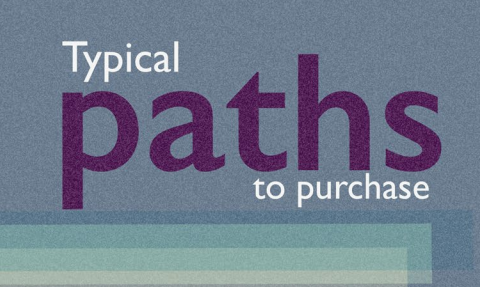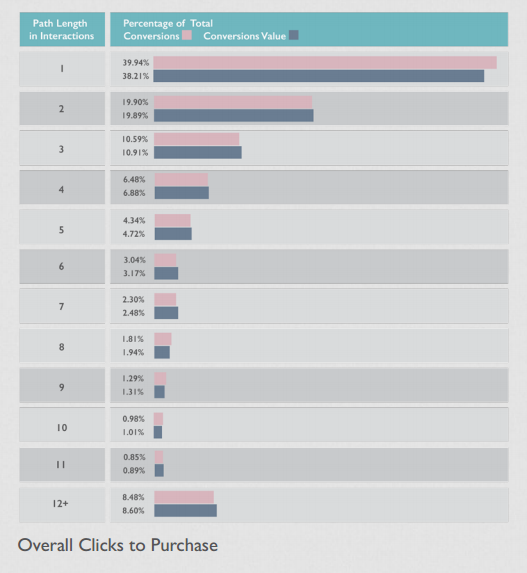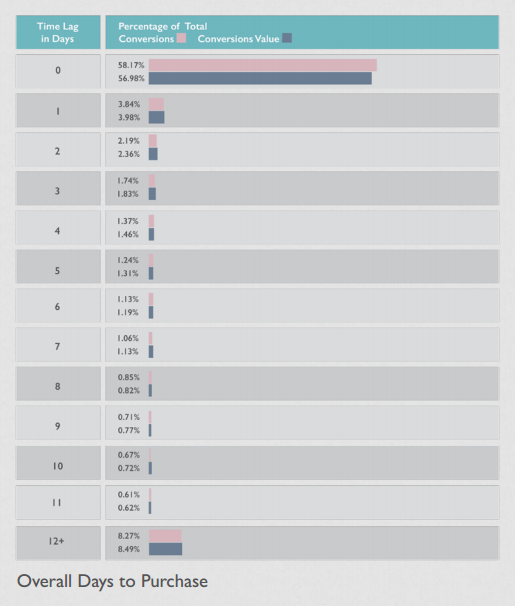By Alan Coleman on 30 Sep 2016
The Path to Purchase in the Context of Time

Digital marketers often obsess over the last click conversion without taking the time to establish a fuller picture of all the website touchpoints prior to that last converting click.
In this post I will discuss average time lag and average path length figures according to The Wolfgang E-Commerce Benchmarks 2016 Report.
This is critical data. Today’s consumer journeys to purchase take place over multiple touchpoints. For online-only retailers we are seeing that 40% of revenue happens after 3 “same device” clicks and after 5 days.
**Context – we aren’t measuring cross-device conversions here, therefore the conversion paths we can measure only happen on one device, hence it’s certain that actual conversion paths are longer than the Google Analytics data demonstrates.
Here are some of implications of longer paths to purchase:
Conversion Rate Consideration
The more clicks prior to purchase the lower your conversion rate will be; don't forget to take assisted conversions into account when analysing overall conversion metrics.
AdWords Impression Share
If you have limited impression share you could have a leaky bucket, i.e. you are investing in the first 2 clicks to warm up the prospect but budget is then depleted when the searcher comes back to search again.
Cross-Channel Audience Strategy
As paths to purchase become longer your cross channel audience strategy grows in importance. When implemented correctly, you can design and create the touchpoints required for a conversion.


You can read the full E-commerce Benchmarks 2016 study here. Or check out the easy to digest infographic here.

Moz / Inc / The Economist / RTE / The Irish Times / Newstalk Radio








